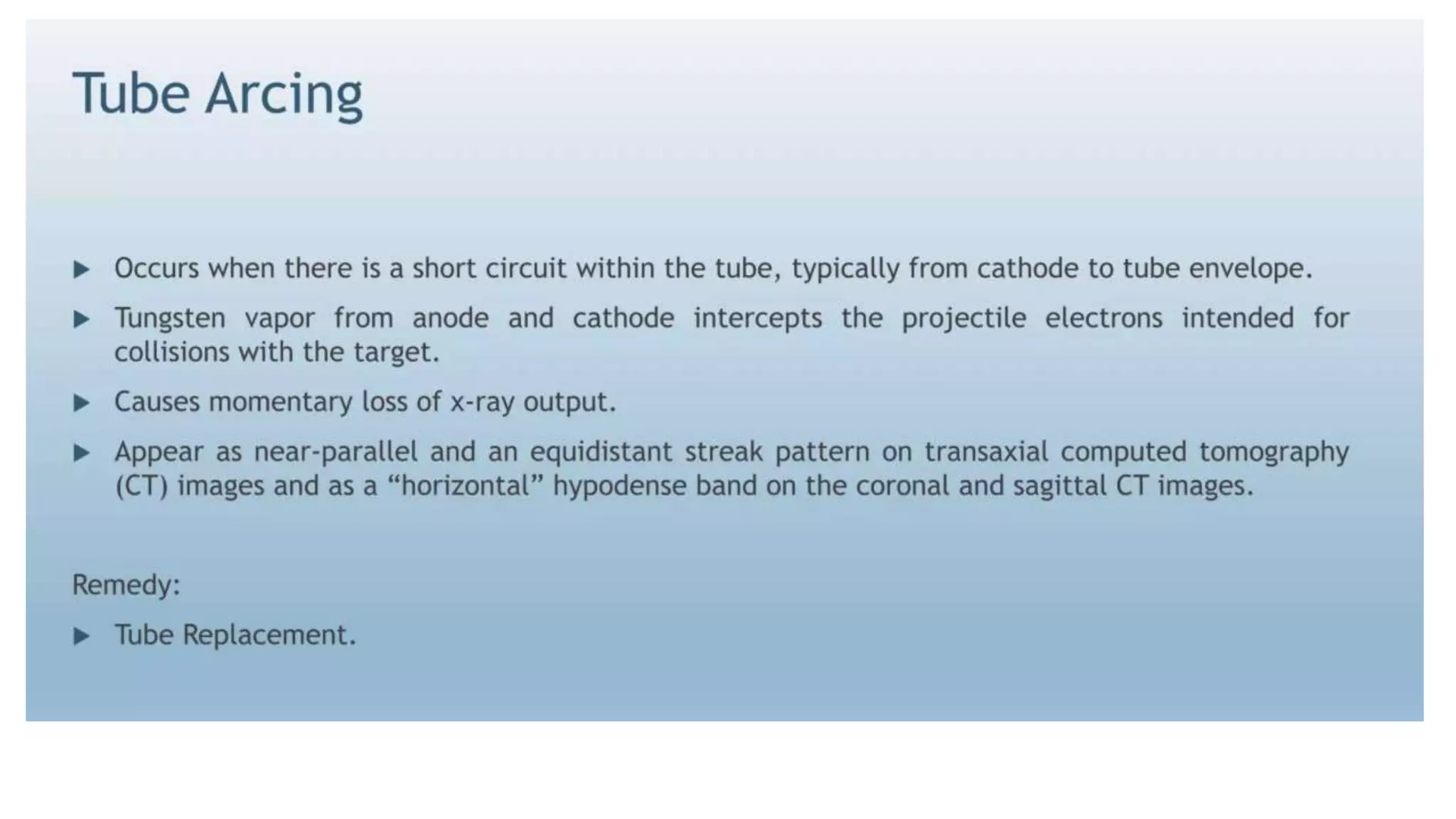CT artifacts can be caused by a variety of factors related to the physics of CT imaging, the patient, and hardware issues. Physics-based artifacts include beam hardening, which causes cupping and streak artifacts, as well as partial volume averaging and noise. Patient motion can also cause artifacts. Hardware issues like ring artifacts may occur from problems with the x-ray tube. Proper use of filters and reconstruction techniques can help reduce artifacts like beam hardening, while keeping the patient still can minimize motion artifacts. Artifacts need to be understood as they can obscure anatomy or be mistaken for pathology.



























































